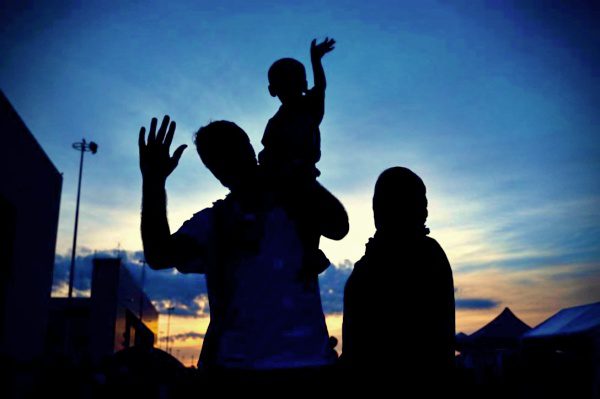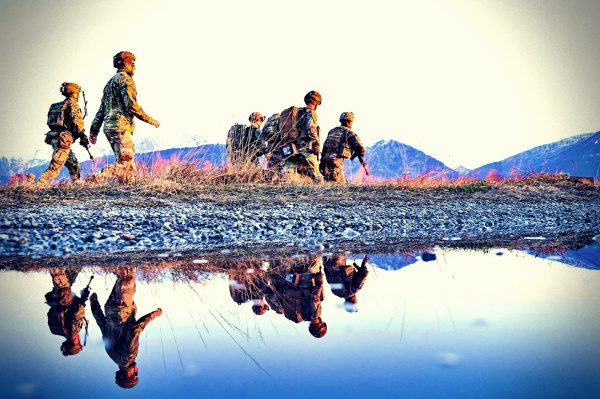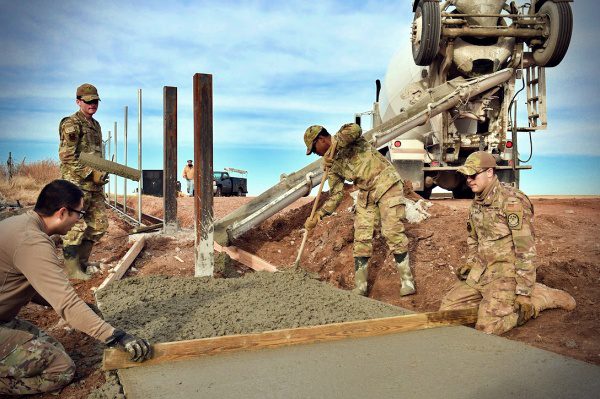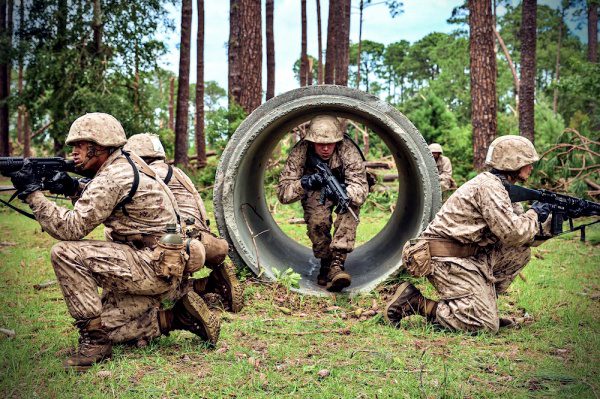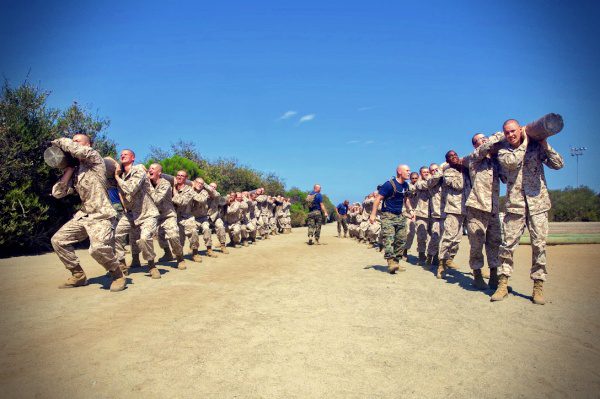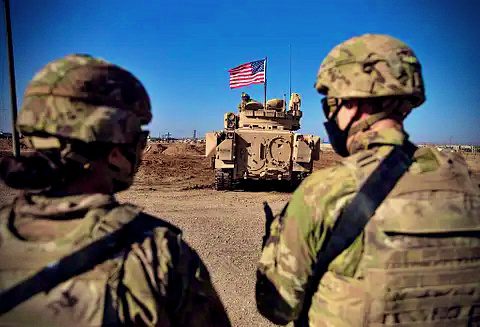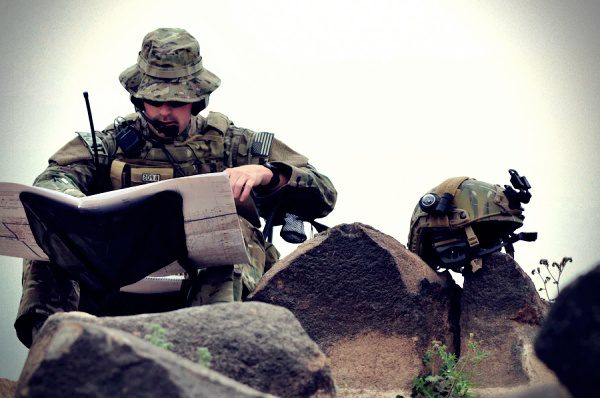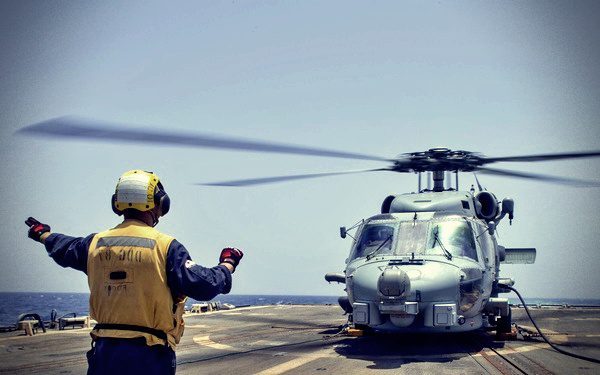Expert Witnesses and Scientific Evidence in Court-Martials
Military Rule of Evidence (MRE) 702
Military Rule of Evidence 702. Testimony by experts
If scientific, technical, or other specialized knowledge will assist the trier of fact to understand the evidence or to determine a fact in issue, a witness qualified as an expert by knowledge, skill, experience, training, or education, may testify thereto in the form of an opinion or otherwise.
Trial judges decide preliminary questions concerning the relevance, propriety, and necessity of expert testimony, the qualification of expert witnesses, and the admissibility of his or her testimony. See Mil. R. Evid. 104(a).
In United States v. Houser, 36 M.J. 392 (1993) the CAAF set out six factors that a judge should use to determine the admissibility of expert testimony. They are:
Qualified Expert. To give expert testimony, a witness must qualify as an expert by virtue of his or her “knowledge, skill, experience, training, or education.” See MRE 702
Proper Subject Matter. Expert testimony is appropriate if it would be “helpful” to the trier of fact. It is essential if the trier of fact could not otherwise be expected to understand the issues and rationally resolve them. See Mil. R. Evid. 702.
Proper Basis
The expert’s opinion may be based on admissible evidence “perceived by or made known to the expert at or before the hearing” or inadmissible hearsay if it is “of a type reasonably relied upon by experts in the particular field in forming opinions or inferences upon the subject. . . .” The expert’s opinion must have an adequate factual basis and cannot be simply a bare opinion. See Mil. R. Evid. 702 and 703.
Relevant. Expert Testimony must be relevant. See Mil. R. Evid. 402.
Reliable. The expert’s methodology and conclusions must be reliable. See MRE 702.
Probative Value. The probative value of the expert’s opinion and the information comprising the basis of the opinion must not be substantially outweighed by any unfair prejudice that could result from the expert’s testimony. See Mil. R. Evid. 403.
The Expert’s Qualification To Form an Opinion.
Rule 702. Testimony by experts
. . . a witness qualified as an expert by knowledge, skill, experience, training, or education, may testify thereto in the form of an opinion or otherwise.
Knowledge, Training, and Education Foundation
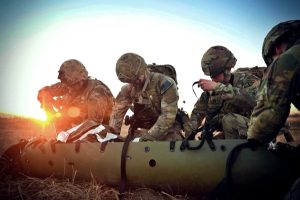 Show degrees attained from educational institutions;
Show degrees attained from educational institutions;
Show other specialized training in the field;
Show the witness is licensed to practice in the field and has done so (if applicable) for a long period of time;
Show teaching experience in the field;
Show the witness’ publications;
Show membership in professional organizations, honors, or prizes received previous expert testimony.
Skill and Experience Foundation. An expert due to specialized knowledge. See, United States v. Mustafa, 22 M.J. 165 (C.M.A.).
Example: United States v. Meeks, 35 M.J. 64 (C.M.A. 1992): Involved testimony by FBI agent concerning his “crime scene analysis” of a double homicide. Testimony included observations that killer was an “organized individual” who had planned and spent some time in preparation for the crime, was familiar with the crime scene and victims, and acted alone. Such evidence was not too speculative for admission under Mil. R. Evid. 702.
United States v. Banks, 36 M.J. 150 (C.M.A. 1992). The military judge erred when he refused to allow a defense clinical psychologist to testify about the relevance of specific measurements for a normal prepubertal vagina, solely because the psychologist was not a medical doctor. As the court noted, testimony from a qualified expert, not proffered as a medical doctor, would have assisted the panel in understanding the government’s evidence.
United States v. Harris, 46 M.J. 221 (1997). Military Judge did not err in qualifying a highway patrolman who investigated over 1500 accidents, as an expert in accident reconstruction.
United States v. McElhaney, 54 M.J. 120 (2000). During the sentencing phase, the government called an expert on the future dangerousness of the accused. The expert said he could not diagnose the accused because he had not interviewed him nor had he reviewed his medical records. In spite of this and objections by defense counsel, the expert did testify about pedophilia and made a strong inference that the accused was a pedophile who had little hope of rehabilitation. The CAAF held that it was an error for the judge to admit this evidence. Citing to Houser, the court noted that the expert lacked the proper foundation for this testimony, as noted by his own statements that he could not perform a diagnosis because of his lack of contact with the accused.
Proper Subject Matter (“Will Assist”)
Helpfulness. Expert testimony is admissible if it will assist the fact-finder. There are two primary ways an expert’s testimony may assist.
Complex Testimony. Experts can explain complex matters such as scientific evidence or extremely technical information that the fact-finders could not understand without expert assistance.
Unusual Applications. Experts can also help explain apparently ordinary evidence that may have unusual applications. Without the expert’s assistance, the fact-finders may misinterpret the evidence. See, United States v. Rivers, 49 M.J. 434 (1998), United States v. Brown, 49 M.J. 448 (1998).
United States v. Hall, 165 F.3d 1095 (7th Cir. 1999). 7th Circuit held that the trial judge did not abuse his discretion in excluding the defense expert on eyewitness identification. Even if the evidence meets the reliability prong of Daubert, it must also meet the helpfulness prong. Here the judge properly ruled that such testimony is not beyond the ken of lay jurors and there was no need for expert opinion testimony.
United States v. Dimberio, 52 M.J. 550 (A.F. Ct. Crim. App. 1999). The military judge excluded the testimony of a defense expert who would testify about the alcoholism and mental problems of the accused’s wife. Air Force court affirmed and held that this evidence was irrelevant because there was no link to these problems and her alleged violence. Testimony was impermissible profile evidence.
Form of the Opinion.
The foundation consists of no more than determining that the witness has formed an opinion, and of what that opinion consists.
Mil. R. Evid. 704.
Rule 704. Opinion on Ultimate Issue
Our Lawyers Defend False Sexual Assault Allegations
Testimony in the form of an opinion or inference otherwise admissible is not objectionable because it embraces an ultimate issue to be decided by the trier of fact.
The current standard is whether the testimony assists the trier of fact, not whether it embraces an “ultimate issue” so as to usurp the panel’s function. At the same time, ultimate-issue opinion testimony is not automatically admissible. The opinion must be relevant and helpful as determined through Rules 401-403 and 702.
United States v. Hill-Dunning, 26 M.J. 260 (C.M.A.), cert. denied, 488 U.S. 967 (1988) (psychiatrist is competent to testify as to a diagnosis of client and may testify that diagnosis is based upon the assumption that what client said is the truth; yet, the same witness may not testify that it is his opinion that what client said is truthful.)
United States v. Lipscomb, 14 F.3d 1236 (7th Cir. 1994) (conclusion of law enforcement experts held qualified to opine that circumstances and behavior indicated intent to distribute drugs was not a legal conclusion as to a specific intent element).
One recurring problem is that expert should not opine that a certain witness’s rendition of events is believable or not. See, e.g., United States v. Petersen, 24 M.J. 283, 284 (C.M.A. 1987) (“We are skeptical about whether any witness could be qualified to opine as to the credibility of another.”) The expert may not become a “human lie detector.” United States v. Palmer, 33 M.J. 7, 12 (C.M.A. 1991).
Questions like whether the expert believes the victim was raped, or whether the victim is telling the truth when she claimed to have been raped (i.e. was the witness truthful?) are impermissible.
However, the expert may opine that a victim’s testimony or history is consistent with what the expert’s examination found and whether the behavior at issue is typical of victims of such crimes. Focus on symptoms, not conclusions concerning veracity. See United States v. Birdsall, 47 M.J. 404 (1998) (expert’s focus should be on whether children exhibit behavior and symptoms consistent with abuse; reversible error to allow social worker and doctor to testify that the child-victims were telling the truth and were the victims of sexual abuse).
Questions such as whether the victim’s behavior is consistent with individuals who have been raped, or whether injuries are consistent with a child who has been battered, however, are permissible.
Examples: An expert may testify as to what symptoms are found among children who have suffered sexual abuse and whether the child-witness has exhibited these symptoms. United States v. Harrison, 31 M.J. 330, 332 (C.M.A. 1990).
UNITED STATES V. CACY, 43 M.J. 214 (1995): ACCUSED CHARGED WITH SODOMY AND INDECENT LIBERTIES ON SIX-YEAR-OLD DAUGHTER. EXPERT TESTIMONY THAT CHILD’S BEHAVIOR IS CONSISTENT WITH BEHAVIOR PATTERNS OF A TYPICAL SEXUAL ABUSE VICTIM AND THAT VICTIM DID NOT APPEAR REHEARSED ADMISSIBLE. HOWEVER, TESTIMONY THAT EXPERT EXPLAINED TO CHILD IMPORTANCE OF BEING TRUTHFUL AND, BASED ON CHILD’S RESPONSES, RECOMMENDED FURTHER TREATMENT, WAS AN AFFIRMATION THAT EXPERT BELIEVED THE VICTIM, WHICH IMPROPERLY USURPED THE RESPONSIBILITY OF THE FACT-FINDER
UNITED STATES V. MARRIE, 43 M.J. 35 (1995): GOVERNMENT EXPERTS TESTIFIED THAT PRETEEN AND TEENAGE BOYS (THE VICTIMS) WERE THE LEAST LIKELY GROUP TO REPORT ABUSE BECAUSE OF SHAME AND EMBARRASSMENT AND FEAR OF BEING LABELED A HOMOSEXUAL. SHE OPINED THAT FALSE ALLEGATIONS FROM THAT GROUP WERE “EXTREMELY RARE” AND OUTSIDE OF HER CLINICAL EXPERIENCE. SUCH TESTIMONY WAS IMPROPERLY ADMITTED, ALTHOUGH HARMLESS.
UNITED STATES V. RAYA, 45 M.J. 251 (1996). THE SOCIAL WORKER’S TESTIMONY THAT THE RAPE VICTIM WAS NOT VINDICTIVE AND WANTED TO STAY AWAY FROM THE ACCUSED WAS NOT AN IMPROPER COMMENT ON CREDIBILITY.
UNITED STATES V. ANDERSON, 50 M.J. 447 (1999), ACCUSED CHARGED WITH CHILD SEXUAL ABUSE. ON APPEAL FOR THE FIRST TIME DEFENSE OBJECTED TO TESTIMONY OF A GOVERNMENT EXPERT ON CHILD ABUSE ACCOMMODATION SYNDROME. DEFENSE CLAIMED THAT IT AMOUNTED TO LABELING THE ACCUSED AS AN ABUSER AND VOUCHING FOR THE CREDIBILITY OF THE VICTIMS BECAUSE THE EXPERT GOT ALL HER INFORMATION FROM THE VICTIMS. CAAF REJECTED THAT ARGUMENT AND NOTED THAT THE EXPERT TESTIMONY WAS LIMITED TO FACTORS AND THAT THE FACTS OF THIS CASE WERE CONSISTENT WITH THOSE FACTORS
BUT SEE UNITED STATES V. SCHLAMER, 52 M.J. 80 (1999). ON REDIRECT EXAMINATION TC ASKED ONE OF THE ACCUSED’S INTERROGATORS IF HE BELIEVED THE ACCUSED WAS MAKING THE CONFESSION UP. THE COURT SAID THE QUESTION WAS PERMISSIBLE BECAUSE; INVESTIGATOR WAS AN EYE-WITNESS TO THE CONFESSION, THE WITNESS GAVE A CONCLUSORY ANSWER THAT ADDED NOTHING, AND THE ACCUSED HAD TWO DOCTORS TESTIFY THAT THE CONFESSION WAS UNRELIABLE, SO THE GOVERNMENT SHOULD HAVE THE CHANCE TO REBUT WITH AN EYE WITNESS. AND, IF THIS WAS ERROR, IT WAS HARMLESS.
UNITED STATES V. EGGAN, 51 M.J. 159 (1999). ACCUSED CONVICTED OF FORCIBLE SODOMY WITH ANOTHER SOLDIER. DEFENSE THEORY WAS THAT IT WAS CONSENSUAL. THE VICTIM SOUGHT COUNSELING AFTER THE INCIDENT AND THE GOVERNMENT CALLED THE COUNSELOR IN AS AN EXPERT WITNESS. THE DEFENSE ASKED THE EXPERT IF THE VICTIM COULD BE FAKING HIS EMOTIONS. THE EXPERT SAID IT WAS POSSIBLE. ON RE-DIRECT THE EXPERT TESTIFIED THAT HE SAW NO EVIDENCE OF FAKING. ON APPEAL DEFENSE CLAIMED THAT THIS OPINION WAS ERROR BECAUSE HE WAS COMMENTING ON THE WITNESS’ CREDIBILITY. CAAF REJECTED THIS ARGUMENT NOTING THAT THE DEFENSE OPENED THE DOOR TO THIS LINE OF QUESTIONING, DID NOT OBJECT AT TRIAL.
UNITED STATES V. ARMSTRONG, 53 M.J. 76 (2000). ACCUSED CHARGED WITH INDECENT ACTS WITH HIS DAUGHTER. ACCUSED MADE A PARTIAL CONFESSION TO THE POLICE AND AT TRIAL STATED THAT ANY CONTACT WITH HIS DAUGHTERS WAS NOT OF A SEXUAL NATURE. ON REBUTTAL THE GOVT. CALLED AN EXPERT IN CHILD ABUSE WHO TESTIFIED THAT IN HER OPINION THE VICTIM SUFFERED ABUSE AT THE HANDS OF HER FATHER. THE DEFENSE DID NOT OBJECT. ON APPEAL CAAF HELD ERROR AND REVERSED THE CASE. THE COURT NOTED THAT ERROR WAS NOT CONSTITUTIONAL. NONETHELESS, THE COURT HELD THAT THE ERROR HAD A SUBSTANTIAL INFLUENCE ON THE FINDINGS AND REVERSED.
UNITED STATES V. ROBBINS, 52 M.J. 455 (2000). ACCUSED CHARGED WITH TWO SPECIFICATIONS OF SODOMY WITH A CHILD UNDER 16. THE SOCIAL WORKER TESTIFIED THAT IN THIS CASE, THE ALLEGATION WAS SUBSTANTIATED. A SECOND WITNESS ALSO TESTIFIED, ABOUT WHAT THE VICTIM TOLD HERE. SHE TESTIFIED THAT WHEN THE VICTIM REPORTED THE INCIDENT TO HER, THE VICTIM APPEARED NOT TO BE LYING. THE DEFENSE DID NOT OBJECT TO ANY OF THIS EVIDENCE. CAAF CITED BIRDSALL AND THEN DISTINGUISHED THIS CASE PRIMARILY BECAUSE IT WAS A JUDGE-ALONE CASE AND SINCE THE JUDGE IS PRESUMED TO KNOW AND APPLY THE LAW CORRECTLY, THESE ERRORS WERE NOT PLAIN ERRORS AND NO RELIEF.
Basis For the Expert’s Testimony – Bases of Expert Opinion
Mil. R. Evid. 703 provides:
The facts or data in the particular case upon which an expert bases an opinion or inference may be those perceived by or made known to the expert, at or before the hearing. If of a type reasonably relied upon by experts in the particular field in forming opinions or inferences upon the subject, the facts or data need not be admissible in evidence.
The language of the rule is broad enough to allow three types of bases: facts personally observed by the expert; facts posed in a hypothetical question; and hearsay reports from third parties. United States v. Reveles, 42 M.J. 388 (1995), expert testimony must be based on the facts of the case.
Hypothetical questions (no longer required). No need to assume facts in evidence, but, if used, must be reasonable in light of the evidence. United States v. Breuer, 14 M.J. 723 (A.F.C.M.R. 1982).
The proponent may specify historical facts for the expert to assume as true or may have the expert assume the truth of another witness or witnesses.
Personal Perception. United States v. Hammond, 17 M.J. 218 (C.M.A. 1984). The fact that the expert did not interview or counsel the victim did not render expertly unqualified to arrive at an opinion concerning rape trauma syndrome. United States v. Snodgrass, 22 M.J. 866 (A.C.M.R. 1986); United States v. Raya, 45 M.J. 251 (1996). Defense objected to social worker’s opinion that victim was exhibiting symptoms consistent with rape trauma accommodation syndrome and suffered from PTSD on basis that opinion was based solely on observing victim in court, reading reports of others and assuming facts as alleged by victim were true. Objection went to weight to be given expert opinion, not admissibility. The foundational elements include:
Where and when the witness observed the fact;
Who was present;
How the witness observed the fact;
A description of the observed fact.
Facts presented out-of-court (nonrecord facts), if “of a type reasonably relied upon by experts in the particular field” (even if inadmissible).
“The rationale in favor of admissibility of expert testimony based on hearsay is that the expert is fully capable of judging for himself what is, or is not, a reliable basis for his opinion. This relates directly to one of the functions of the expert witness, namely to lend his special skill to the issue before him.” United States v. Sims, 514 F.2d 147, 149 (9th Cir.), cert. denied, 423 U.S. 845 (1975).
There is a potential problem of smuggling in otherwise inadmissible evidence.
UNITED STATES V. NEELEY, 25 M.J. 105 (C.M.A. 1987), CERT. DENIED, 484 U.S. 1011 (1988). PSYCHIATRIST’S TESTIMONY THAT SHE CONSULTED WITH OTHER PSYCHOLOGISTS IN REACHING HER CONCLUSION THAT ACCUSED HAD INFLATED RESULTS OF PSYCHIATRIC TESTS AND HER OPINION WAS THE CONSENSUS AMONG THESE PEOPLE WAS HEARSAY AND INADMISSIBLE. MILITARY JUDGE MAY CONDUCT A 403 BALANCING TO DETERMINE IF THE PROBATIVE VALUE OF THIS FOUNDATION EVIDENCE IS OUTWEIGHED BY UNFAIR PREJUDICE.
UNITED STATES V. HARTFORD, 50 M.J. 402 (1999). DEFENSE WAS NOT ALLOWED TO CROSS-EXAMINE THE GOVERNMENT EXPERT ABOUT CONTRARY OPINIONS FROM TWO COLLEGES. THE DEFENSE DID NOT CALL THE TWO AS WITNESSES AND THERE WAS NO EVIDENCE THAT THE GOVERNMENT EXPERT RELIED ON THE OPINIONS OF THESE COLLEGES. THE CAAF HELD THE MJ DID NOT ERR IN EXCLUDING THIS QUESTIONING AS IMPERMISSIBLE SMUGGLING UNDER MRE 703.
The elements of the foundation for this basis include:
THE SOURCE OF THE THIRD PARTY REPORT;
THE FACTS OR DATA IN THE REPORT;
IF THE FACTS ARE INADMISSIBLE, A SHOWING THAT THEY ARE NONETHELESS OF THE TYPE REASONABLY RELIED UPON BY EXPERTS IN THE PARTICULAR FIELD.
Relevance
Expert testimony, like any other testimony, must be relevant to an issue at trial. See, MRE 401, 402, and Daubert, v. Merrell Dow Pharmaceuticals, Inc. 509 U.S. 579 (1993).
Reliability
The Test for Scientific Evidence. In Daubert v. Merrell Dow Pharmaceuticals Inc., 509 U.S. 579 (1993), the Supreme Court held that nothing in the Federal Rules indicates that “general acceptance” is a precondition to the admission of scientific evidence. The rules assign the task to the judge to ensure that expert testimony rests on a reliable basis and is relevant. The judge assesses the principles and methodologies of such evidence pursuant to Mil. R. Evid. 104(a).
The role of the judge as a “gatekeeper” leads to a determination of whether the evidence is based on a methodology that is “scientific,” and therefore reliable. The judgment is made before the evidence is admitted, and entails “a preliminary assessment of whether the reasoning or methodology is scientifically valid.” Trial court possessed with broad discretion in admitting expert testimony; rulings tested only for abuse of discretion. General Electric Co. v. Joiner, 118 S. Ct. 512 (1997). See also United States v. Kaspers, 47 M.J. 176 (1997).
Factors. The Supreme Court discussed a nonexclusive list of factors to consider in admitting scientific evidence, which included the Frye v. United States, 293 F. 1013 (D.C. Cir. 1923) test as a separate consideration:
whether the theory or technique can be and has been tested;
whether the theory or technique has been subjected to peer review and publication;
whether the known or potential rate of error is acceptable;
whether the theory/technique enjoys widespread acceptance.
After Daubert, “helpfulness” alone will not guarantee admission of evidence because it does not guarantee “reliability.”
Examples:
DNA TESTING. UNITED STATES V. THOMAS, 43 M.J. 626 (A.F.CT. CRIM. APP. 1995), ONE AIR FORCE APPELLATE JUDGE HELD THAT THE MILITARY JUDGE DID NOT ABUSE HIS DISCRETION IN ADMITTING DNA RESULTS OBTAINED BY PCR METHODOLOGY. JUDGE PROPERLY APPLIED DAUBERT FACTORS AND ANY WEAKNESSES IN PCR METHODOLOGY GO TO WEIGHT NOT ADMISSIBILITY.
LUMINOL TESTING. UNITED STATES V. HILL, 41 M.J. 596 (ARMY CT. CRIM. APP. 1994), LUMINOL TESTS SATISFY THE DAUBERT CRITERIA WHERE TESTIMONY IS LIMITED TO AN OPINION THAT POSITIVE RESULTS ONLY SHOW A PRESUMPTIVE POSITIVE FOR BLOOD. SEE ALSO, UNITED STATES V. HOLT, 46 M.J. 853 (N.M.CT. CRIM. APP. 1997), UNITED STATES V. SCHLAMER, 47 M.J. 670 (N.M.CT. CRIM.APP. 1997)
CHEMICAL HAIR ANALYSIS. UNITED STATES V. NIMMER, 43 M.J. 252 (1995), CASE REMANDED IN ORDER TO ALLOW THE LOWER COURT TO APPLY THE DAUBERT MODEL TO RIA AND GC/MS TESTING FOR THE PRESENCE OF COCAINE. SEE ALSO, UNITED STATES V. BUSH, 44 M.J. 646 (A.F.CT. CRIM. APP. 1996), MILITARY JUDGE DID NOT ABUSE HIS DISCRETION IN APPLYING DAUBERT FACTORS AND PERMITTING ANALYSIS OF THE ACCUSED’S HAIR TO GO BEFORE THE MEMBERS.
Non-Scientific Evidence
The Supreme Court recently resolved whether the judge’s gatekeeping function and the Daubert factors apply to non-scientific evidence. In Kumho Tire v. Carmichael, 119 S. Ct. 1167 (1999), the Court held that the trial judge’s gatekeeping responsibility applies to all types of expert evidence. The Court also held that to the extent the Daubert factors apply, they can be used to evaluate the reliability of this evidence. Finally, the Court ruled that factors other than those announced in Daubert can also be used to evaluate the reliability of non-scientific expert evidence.
United States v. Brown 49 MJ. 448, (1998). MJ Judge excluded the testimony of defense expert in eyewitness identification on 403 grounds. Army court said this per se denial was an abuse of discretion but harmless. CAAF reviewed and affirmed. CAAF did not address the correctness of that part of the Army court’s decision. Nor did CAAF illuminate how Daubert factors applied to this kind of expert testimony. The court did not announce any per se rule on the admissibility of this type of expert testimony. See also, the United States v. Rivers, 49 M.J. 434 (1998).
United States v. Mustafa, 22 M.J. 165 (C.M.A.), cert. denied, 479 U.S. 953 (1986). In this pre-Daubert case involving blood-spatter evidence, the court used a three-step analysis. First, does the evidence involve an area of specialized knowledge? Second, would the expert testimony be relevant (helpful) to the trier of fact? Third, is the expert qualified to testify? After Kumho Tire, this minimal inquiry may not be sufficient. The trial judge should do more than consider the expert’s qualifications in making the reliability determination.
Other Factors (See comments to proposed changes to FRE 702). Other factors courts have considered evaluating the reliability of scientific and scientific testimony include:
Was the information developed for the purpose of litigation?
Did the expert unjustifiably extrapolate facts to support conclusions?
Are there alternative explanations?
Is the expert being as careful as they would be in their regular professional work outside paid litigation?
Is there a well-accepted body of learning in this area?
How much practical experience does the expert have and is there a close fit between the experience and the testimony?
Is the testimony based on objective observations and standards?
Matters for Experts.
Drug Testing. United States v. Campbell, 50 M.J. 154 (1999). Defense claimed that the lab’s use of GC/MS/MS to determine the existence of LSD in urine failed under Daubert. CAAF hinted that there may be problems but reversed the case because the government failed to show that the 200 PG/ML established by DoD adequately accounted for innocent ingestion.
Sleep Disorders. United States v. Blaney, 50 M.J. 533 (A.F. Ct. Crim. App. 1999). Accused charged with sodomizing another male victim while the victim was asleep. Defense wanted to admit the testimony of two experts to testify about the victim’s alleged sleep disorders. Military judge excluded the testimony and the Air Force Court affirmed. Court held that under Daubert, the expert’s methodologies were unreliable and not helpful because the victim had not been interviewed.
False Confessions. United States v. Griffin, 50 M.J. 278 (1999), CAAF held that MJ did not abuse his discretion in excluding the testimony of an expert in false confessions. The court reasoned that no witness could serve as a human lie detector, and in this case the evidence was unreliable because there was no correlation between the expert’s studies and the accused in this case. In the future, no per se exclusion, may be admissible if testimony is limited to factors and there is a close correlation between the study group and the accused at trial.
Child Abuse Accommodation Syndrome. United States v. Suarez, 35 M.J. 374 (C.M.A. 1992): In trial for child sex abuse crimes, evidence was received on how the victim exhibited “Child Sexual Abuse Accommodation Syndrome” (children change or recant their stories, delay or fail to report abuse, accommodate themselves to the abuse). While such evidence is controversial, it may be admitted where it explains the abused child’s delay or recantation, as was the case here. United States v. Cacy, 43 M.J. 214 (1995).
Dysfunctional Family Profile Evidence. United States v. Banks, 36 M.J. 150 (1992). Error to present expert testimony that accused’s family in a situation as ripe for child sexual abuse, purporting to present characteristics of a family that included child sexual abuser, then pursuing a deductive scheme of reasoning that families with the profile present an increased risk of child sexual abuse and that Bank’s family fit the profile.
UNITED STATES V. PAGEL, 45 M.J. 64 (1996). NO ABUSE OF DISCRETION IN ALLOWING GOVERNMENT EXPERT TO TESTIFY CONCERNING A DYSFUNCTIONAL FAMILY “PROFILE” AND WHETHER THE ACCUSED’S FAMILY DISPLAYED ANY OF ITS CHARACTERISTICS. TESTIMONY WENT TO SUPPORT CREDIBILITY OF DAUGHTER’S ACCUSATIONS AND TO EXPLAIN HER ADMITTED UNUSUAL BEHAVIOR. UNLIKE IN BANKS EVIDENCE USED TO EXPLAIN THE BEHAVIOR OF THE VICTIM ON THE ASSUMPTION SHE WAS ABUSED BY SOMEONE, NOT NECESSARILY THE ACCUSED. USING “PROFILE’ EVIDENCE TO EXPLAIN THE COUNTER-INTUITIVE BEHAVIORAL CHARACTERISTICS OF SEXUAL ABUSE VICTIMS WAS PERMISSIBLE.
Rape Trauma Syndrome. Rape Trauma is a subcategory of PTSD in the DSM-IV. The psychiatric community recognizes it as valid and reliable. Evidence may assist fact-finder by providing knowledge concerning victim’s reaction to assault. United States v. Carter, 26 M.J. 428 (C.M.A. 1988)(Rape trauma syndrome evidence will assist the trier of fact in determining the issue of consent. This would be particularly true where such members would likely have little or no experience with victims of rape. . . [The RTS evidence] serves as a helpful tool by providing the fact-finders with knowledge regarding a victim’s psychological reactions to an alleged sexual assault.)
OTHER USES: RTS TESTIMONY TO REBUT AN INFERENCE THAT A VICTIM’S CONDUCT WAS INCONSISTENT WITH A CLAIM OF RAPE WHERE SHE DID NOT FIGHT OFF THE ATTACKER, MADE INCONSISTENT STATEMENTS CONCERNING THE ASSAULT, DID NOT MAKE A FRESH COMPLAINT, AND RECOUNTED THE INCIDENT IN A CALM AND “UNNATURAL” MANNER. SEE UNITED STATES V. COX, 23 M.J. 808 (N.M.C.M.R. 1986), UNITED STATES V. HARTFORD, 50 M.J. 402 (1999).
IMPERMISSIBLE TESTIMONY. UNITED STATES V. BOSTICK, 33 M.J. 849 (A.C.M.R. 1991). PSYCHOLOGIST IMPERMISSIBLY EXPRESSED AN OPINION CONCERNING THE RAPE VICTIM’S CREDIBILITY BY DISCUSSING THE PERFORMANCE OF THE VICTIM ON A “RAPE AFTERMATH SYMPTOMS TEST,” (RAST) AND BY STATING THAT THE VICTIM DID NOT FAKE OR FEIGN HER CONDITION. THE EXPERT THUS BECAME A “HUMAN LIE DETECTOR.” THE RAST FAILED TO MEET THE REQUIREMENTS FOR ADMISSIBILITY OF SCIENTIFIC TESTIMONY (LACK OF FOUNDATION). DESPITE LACK OF DEFENSE OBJECTION, THE COURT FINDS PLAIN ERROR AND SETS ASIDE FINDINGS AND SENTENCE.
Handwriting Analysis. Two more district courts are following the trend to limit the expert’s testimony to characteristics and prevent them from either testifying that a certain individual was the author of a questioned document or to their degree of certainty. United States v. Ruthaford, 104 F. Supp. 2d 1190 (Dist. of NE 2000); United States v. Santillan, 1999 U.S. Dist. Lexis 21611 (Northern Dist. of CA).
Hypnosis. Admissible if the military judge finds that the use of hypnosis was reasonably likely to result in recall compatible in accuracy to normal human memory. United States v. Harrington, 18 M.J. 797 (A.C.M.R. 1984); Rock v. Arkansas, 483 U.S. 44 (1987). Proponent must show by clear and convincing evidence satisfaction of the following procedural safeguards:
INDEPENDENT, EXPERIENCED HYPNOTIST CONDUCTED.
HYPNOTIST NOT REGULARLY EMPLOYED BY THE PARTIES.
INFORMATION REVEALED TO THE HYPNOTIST IS RECORDED.
DETAILED STATEMENT MUST BE OBTAINED FROM THE WITNESS IN ADVANCE.
ONLY HYPNOTIST AND SUBJECT PRESENT DURING SESSION.
DNA. United States v. Youngberg, 43 M.J. 379 (1995) (evidence of DNA testing is admissible at courts-martial if proper foundation is laid. United States v. Davis, 40 F.3d 1069 (10th Cir), cert. denied, 115 S. Ct. 1387 (1995) (statistical probabilities are basic to DNA analysis and their use has been widely researched and discussed).
Psychological Autopsy.
UNITED STATES V. ST. JEAN, 45 M.J. 435 (1996). NO ERROR IN ALLOWING FORENSIC PSYCHOLOGIST TO TESTIFY ABOUT SUICIDE PROFILES AND THAT HIS “PSYCHOLOGICAL AUTOPSY” REVEALED IT WAS UNLIKELY THE DECEASED COMMITTED SUICIDE.
UNITED STATES V. HUBERTY, 53 M.J. 369 (2000). ACCUSED CONVICTED OF INDECENT ACTS AND CONSENSUAL SODOMY. DEFENSE WANTED TO INTRODUCE EXPERT TESTIMONY THAT, BASED ON HIS TESTING, THE ACCUSED COULD NOT HAVE EXPOSED HIMSELF IN PUBLIC. THE EXPERT WOULD ALSO TESTIFY THAT THE 17-YEAR-OLD SODOMY VICTIM WAS MANIPULATIVE. THE MILITARY JUDGE DID NOT ALLOW THE EXPERT TO TESTIFY ABOUT THE RESULTS OF THE TEST OR OFFER AN OPINION THAT THE ACCUSED COULD NOT BE AN EXHIBITIONIST. IN REBUTTAL, THE GOVERNMENT CALLED AN EXPERT TO TESTIFY THAT THE ACCUSED MAY HAVE BEEN GROOMING THE 17-YEAR-OLD FOR SEX. ON APPEAL, DEFENSE CLAIMED THAT THE JUDGE ERRED BY LIMITING THE DEFENSE EXPERT AND ALLOWING THE GOVERNMENT EXPERT TO TESTIFY. THE CAAF AFFIRMED THE CONVICTION. THE COURT NOTED THAT THE TRIAL JUDGE HAD PROPERLY EVALUATED THE DEFENSE EXPERT’S OPINION UNDER DAUBERT AND CONCLUDED THAT HIS OPINIONS WERE NOT GENERALLY ACCEPTED AND HAD NOT BEEN SUBJECTED TO PEER REVIEW. THE COURT ALSO NOTED THAT THE EXPERT’S OPINION THAT THE ACCUSED COULD NOT BE AN EXHIBITIONIST BASED ON THE MMPI WAS NOT RELEVANT BECAUSE SUCH TESTIMONY IS IMPERMISSIBLE PROFILING.
Eyewitness Identification.
UNITED STATES V. GARCIA, 44 M.J. 27, CERT. DENIED, 117 S. CT. 174 (1996). ABUSE OF DISCRETION, THOUGH HARMLESS, TO LIMIT TESTIMONY CONCERNING THE UNRELIABILITY OF EYE WITNESS IDENTIFICATION BY PREVENTING TESTIMONY ON THE INVERSE RELATIONSHIP BETWEEN CONFIDENCE AND ACCURACY IN IDENTIFICATIONS AND THEORIES OF MEMORY TRANSFERENCE AND TRANSPOSITION.
UNITED STATES V. BROWN 49 MJ. 448, (1998). MJ JUDGE EXCLUDED THE TESTIMONY OF DEFENSE EXPERT IN EYEWITNESS IDENTIFICATION ON 403 GROUNDS. ARMY COURT SAID THIS PER SE DENIAL WAS AN ABUSE OF DISCRETION BUT HARMLESS. CAAF REVIEWED AND AFFIRMED. CAAF DID NOT ADDRESS THE CORRECTNESS OF THAT PART OF THE ARMY COURTS DECISION. NOR DID CAAF ILLUMINATE HOW DAUBERT FACTORS APPLIED TO THIS KIND OF EXPERT TESTIMONY. THE COURT DID NOT ANNOUNCE ANY PER SE RULE ON THE ADMISSIBILITY OF THIS TYPE OF EXPERT TESTIMONY. SEE ALSO UNITED STATES V. RIVERS, 49 M.J. 434 (1998).
UNITED STATES V. HANKEY, 203 F.3D 1160 (9TH CIR. 2000). IN THIS CASE THE ACCUSED WAS CHARGED WITH CONSPIRACY AND DISTRIBUTION OF DRUGS. ACCUSED WAS A MEMBER OF A GANG AND A CO-ACCUSED AND OTHER WITNESSES TESTIFIED FOR THE DEFENSE AND DENIED ANY WRONG DOING. IN REBUTTAL THE GOVERNMENT CALLED A POLICE OFFICER TO RENDER AN EXPERT OPINION THAT PART OF THE GANG AFFILIATION CODE WAS NOT TO TESTIFY AGAINST ANOTHER GANG MEMBER OR SUFFER PHYSICAL INJURY. DEFENSE SAID THAT THE WITNESS’S OPINION WAS NOT RELIABLE AND MORE PREJUDICIAL THAN PROBATIVE. 9TH CIRCUIT APPLYING KUMHO SAID THE JUDGE DID NOT ABUSE HIS DISCRETION IN ADMITTING THIS EVIDENCE.
UNITED STATES V. SMITHERS, 212 F.3D 306 (6TH CIR. 2000). TRIAL JUDGE ABUSED HIS DISCRETION BY EXCLUDING A DEFENSE EXPERT ON THE WEAKNESSES OF EYEWITNESS IDENTIFICATION. THE TRIAL JUDGE’S COMMENTS THAT HE WANTED TO “EXPERIMENT” WERE INDICATIVE OF THE ABUSE OF HIS DISCRETION, AS WAS HIS FAILURE TO EVEN CONDUCT A DAUBERT TYPE RELIABILITY HEARING.
Future Dangerousness.
United States v. Latorree, 53 M.J. 179 (2000). Accused pleaded guilty to sodomizing a 7 year old girl. In sentencing, the government expert testified, in response to both defense and government questioning, that during treatment most sexual offenders admit to other sexual assaults. On appeal, defense claimed it was error for the expert to provide this information. CAAF ruled that the expert evidence lacked relevance and failed the reliability standards as required by Daubert, but any error in admitting the testimony was harmless.
Polygraph Evidence.
MRE 707. Polygraph Examinations.
(a) Notwithstanding any other provision of law, the results of a polygraph examination, the opinion of a polygraph examiner, or any reference to an offer to take, failure to take, or taking of a polygraph examination shall not be admitted into evidence.
(b) Nothing in this section is intended to exclude from evidence statements made during a polygraph examination which are otherwise admissible.
The Past: From 1923 to 1987, the “Frye” test excluded polygraph evidence because it was not generally accepted within the scientific community. In 1987, the “Frye” test was overruled as the standard for admissibility for scientific evidence. United States v. Gipson, 24 M.J. 246 (C.M.A. 1987). From 1987-1991, polygraph evidence was not per se prohibited for use in courts-martial.
The Rule: In 1991, the President promulgated Mil. R. Evid. 707 as a per se ban on all polygraph evidence in courts-martial – this included the results of an examination, the opinion of an examiner, any reference to an offer to take, the failure to take or the taking of a polygraph examination.
In 1996, CAAF held that the categorical ban on polygraph evidence is an impermissible infringement on the accused’s 6th Amendment right to present a defense provided the accused testifies and had his credibility placed at issue, United States v. Williams, 43 M.J. 348 (1995).United States v. Scheffer, 44 M.J. 442 (1996), cert. granted, 117S. Ct. 1817 (1997) (argued 3 November 1997).
The Supreme Court Speaks. In United States v. Scheffer, 118 S. Ct. 1261 (1998) the Supreme Court overruled CAAF. In an 8 to 1 opinion the Court said that a per se exclusion on polygraph evidence does not unconstitutionally abridge the right of an accused to present a defense.
4 members of the majority believe the ban is unwise and a more “compelling” case my lead to a different result.
Per se ban is somewhat inconsistent with Daubert.
No indication of what level of acceptance is required
Dissent blasts the inconsistency of a vast DoD program that the government argues is unreliable
Dissent points out that president my have violated Article 36 in the promulgation of the rule because there are no issues unique to the military. This issue was assumed by CAAF and not briefed to the Court.
United States v. Light, 48 M.J. 187 (1998). Accused was convicted of larceny for stealing govt. equipment. During the course of the investigation, he was giving a polygraph by CID which he failed. The polygraph failure was one issue that a Texas Justice of the Peace used to grant a search warrant of his civilian quarters. Issue, can polygraph results be considered to decide PC questions? Court noted but did not resolve the tension between these rules as to whether polygraph evidence can be considered.
United States v. Clark, 53 M.J. 280 (2000). Accused pleaded guilty to larceny and false official swearing. In his judge alone case, the stipulation of fact included information that the accused failed a polygraph test. The CAAF ruled that it was plain error for the military judge to admit this evidence, however, the error did not materially prejudice his rights. Therefore, no relief.
United States v. Southwick, 53 M.J. 412 (2000). Accused convicted of wrongful distribution of drugs. She sold the drugs to an informant. At trial, the defense attacked the credibility of the informant by trying to demonstrate that the Air Force had not done a proper certification of him. In response, the informant testified that he had been polygraphed before being accepted as an informant. The defense did not object to this evidence. The CAAF held it was harmless error for this evidence to come before the fact finders, because the polygraph was not directly related to any issues at trial or the informant’s in court testimony.
United States v. Tanksley, 54 M.J. 169 (2000). Buried on page seven of a nine-page statement to NIS agents, the accused stated that he refused to take a polygraph examination. The government offered the entire statement and the information about his refusal to take a polygraph was not redacted. The defense did not object. The CAAF ruled that any passing reference to a polygraph examination did not materially prejudice the accused..
Unites States v. Morris, 47 M.J. 695 (N.M.Ct. Crim. App. 1997). In this case the accused was convicted of false official statements and battery for sexually forcing himself on a female friend. The accused was questioned and he initially claimed the contact was consensual. Then, in a pre-polygraph interview he admitted that the contact was not consensual. The polygraph was never conducted. The MJ prohibited the accused from introducing evidence that the investigators never actually gave him a polygraph. Judge struck the right balance required by MRE 707 by admitting the statement and the circumstances surrounding the statement but not allowing any evidence about an offer to take or the taking of a polygraph to be admitted.

